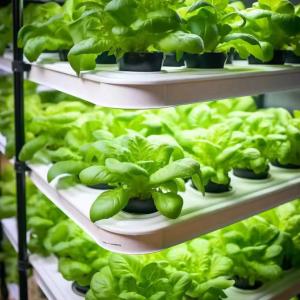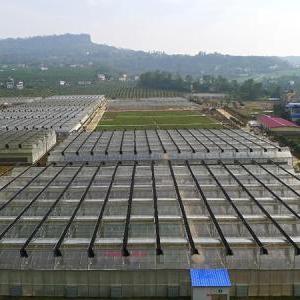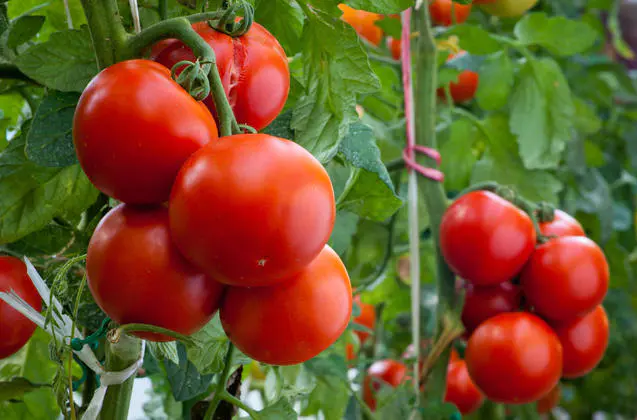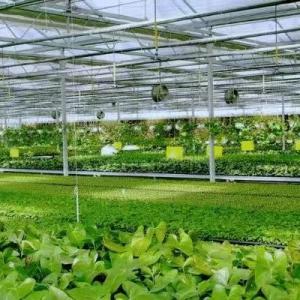Tips for Choosing the Right Vegetable Containers in USA
Tips for Choosing the Right Vegetable Containers for Your Garden in the USA
Gardening is a popular hobby in the United States, and many people enjoy growing their own vegetables. However, not everyone has access to a large backyard or open space for a traditional garden. In such cases, vegetable containers provide an excellent solution. With the right containers, you can create a thriving vegetable garden even in a small space like a balcony or patio. This article will guide you through the process of choosing the right vegetable containers for your garden in the USA, ensuring optimal growth and bountiful harvests.
1. Introduction
Container gardening is a versatile and practical way to grow vegetables in a limited space. It allows individuals who live in apartments or houses with small yards to experience the joys of gardening and enjoy fresh, homegrown produce. By carefully selecting the right vegetable containers, you can optimize your gardening experience and achieve excellent results.
2. Benefits of Vegetable Containers
Vegetable containers offer several advantages for gardeners in the USA. Firstly, they provide flexibility in terms of placement, allowing you to position your plants in the most favorable sunlight conditions. Containers also offer better control over soil quality, drainage, and pest management. Additionally, container gardening reduces the risk of weeds and soil-borne diseases that are commonly found in traditional gardens.
3. Choosing the Right Size
When selecting vegetable containers, size matters. The container should be spacious enough to accommodate the root system of the vegetable you intend to grow. Smaller plants like herbs and lettuce require containers with a depth of at least 6-8 inches, while larger plants like tomatoes and peppers need deeper containers with a minimum depth of 12 inches.
4. Material Selection
Vegetable containers come in various materials, each with its own advantages. Clay pots are porous and allow for better airflow, but they dry out quickly and may require more frequent watering. Plastic containers are lightweight, retain moisture better, and are less prone to cracking. Fabric containers provide excellent drainage and air circulation, promoting healthier root growth. Consider your specific needs and the requirements of the vegetables you plan to grow when choosing the container material.
5. Drainage Considerations
Proper drainage is crucial for the success of container gardening. Containers should have drainage holes at the bottom to prevent waterlogged soil, which can lead to root rot. Elevating the containers slightly using bricks or pot feet allows excess water to flow freely. You can also use a layer of gravel or small stones at the bottom of the container to facilitate drainage.
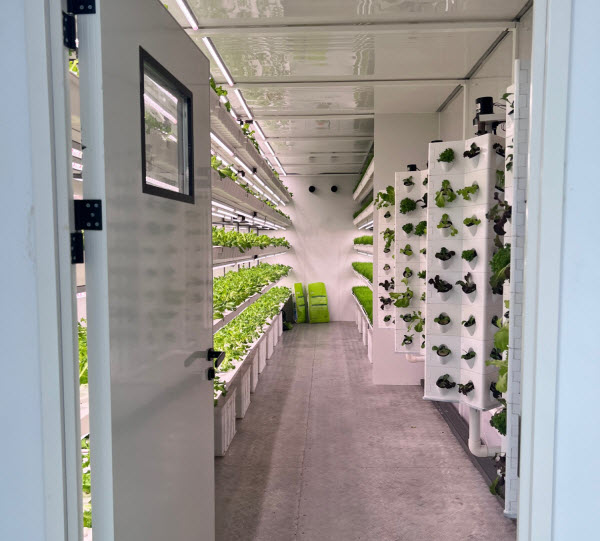
6. Mobility and Portability
Consider the mobility and portability of your vegetable containers. If you have limited space or want the flexibility to move your containers around, choose lightweight options that are easy to transport. Look for containers with built-in handles or consider using wheeled plant caddies for added convenience. This allows you to position your containers strategically to make the most of sunlight and protect your plants from harsh weather conditions.
7. Sunlight and Placement
Proper sunlight is essential for the growth of your vegetables. Most vegetables require at least six hours of direct sunlight per day. When choosing a location for your containers, observe the sunlight patterns in your space. Place your containers where they will receive adequate sunlight, such as on a south-facing balcony or patio. Keep in mind that some vegetables, like leafy greens, can tolerate partial shade, but most thrive in full sun.
8. Suitable Vegetables for Container Gardening
Not all vegetables are well-suited for container gardening. Some vegetables naturally lend themselves to this method due to their compact growth habit or shallow root systems. Here are a few vegetables that perform exceptionally well in containers:
- 1. Tomatoes
- 2. Peppers
- 3. Cucumbers
- 4. Herbs (such as basil, parsley, and thyme)
- 5. Lettuce and salad greens
- 6. Radishes
- 7. Carrots (choose shorter varieties)
- 8. Beans (bush beans or pole beans with trellis support)
These vegetables are just a few examples, and you can experiment with other varieties based on your preferences and container size.
9. Soil and Fertilizer Requirements
Choosing the right soil mix is crucial for the success of your container garden. Opt for high-quality potting soil that is well-draining and rich in organic matter. Avoid using garden soil, as it can become compacted and hinder root growth in containers. Additionally, consider incorporating slow-release organic fertilizers or regularly feeding your plants with liquid fertilizers to ensure they receive the necessary nutrients.
10. Watering and Maintenance
Proper watering is essential for container-grown vegetables. Containers tend to dry out faster than garden beds, so monitor the moisture levels regularly. Water your plants whenever the top inch of soil feels dry to the touch, and ensure thorough watering until water drains out of the container's drainage holes. Mulching the surface of the soil with organic materials like straw or wood chips can help retain moisture and reduce water evaporation.
Regular maintenance tasks include pruning, staking, and removing any diseased or damaged plant parts. Regularly check for pests and diseases, and take necessary steps for control or prevention, such as using organic insecticides or introducing beneficial insects to your garden.
11. Pest and Disease Control
Container gardening is not immune to pests and diseases. Keep a watchful eye on your plants and take appropriate measures to prevent and control common issues. Encourage beneficial insects like ladybugs and lacewings, which feed on garden pests. Neem oil, insecticidal soaps, and organic pest repellents can also help manage pest problems. Proper spacing between plants, good airflow, and regular plant inspections are vital to prevent diseases such as fungal infections.
12. Harvesting and Enjoying Your Homegrown Vegetables
One of the most rewarding aspects of container gardening is the joy of harvesting and enjoying your homegrown vegetables. Harvest your vegetables when they are ripe and at their peak flavor. Follow specific guidelines for each vegetable regarding harvesting techniques and timing. Be sure to savor the flavors and share your bountiful harvest with family and friends.
13. Frequently Asked Questions (FAQs)
FAQ 1: Can I grow any vegetable in a container?
While not all vegetables are suitable for container gardening, many vegetables can thrive in containers. It's important to consider the size of the container and the specific requirements of each vegetable. Compact varieties or those with shallow root systems tend to perform best. Research the specific needs of the vegetables you wish to grow to ensure success.
FAQ 2: How often should I water my vegetable containers?
The frequency of watering depends on various factors such as the size of the container, weather conditions, and the type of vegetable. As a general guideline, check the moisture level of the soil regularly and water when the top inch feels dry. Avoid overwatering, as it can lead to root rot. It's better to water deeply and less frequently than to water lightly but frequently.
FAQ 3: Can I reuse the soil from the previous season?
It's generally recommended to refresh the soil in your vegetable containers each growing season. Reusing soil can lead to nutrient depletion and the accumulation of pests and diseases. However, you can revitalize the soil by adding organic matter, such as compost or well-rotted manure, to improve its fertility and structure.
FAQ 4: What are some common pests that affect container-grown vegetables?
Container-grown vegetables are susceptible to common pests such as aphids, whiteflies, snails, slugs, and caterpillars. Regularly inspect your plants for signs of pest activity, and take appropriate measures to control them. Using organic pest control methods, like neem oil or insecticidal soaps, can help keep pests at bay.
FAQ 5: How long does it take for vegetables to grow in containers?
The time it takes for vegetables to grow in containers varies depending on the specific vegetable and growing conditions. Leafy greens like lettuce and spinach can be harvested within a few weeks, while tomatoes and peppers may take several months. Refer to the seed packet or plant label for estimated maturity times, and monitor your plants' growth regularly.
Conclusion
Container gardening offers a convenient and versatile way to grow vegetables in limited spaces. By choosing the right vegetable containers, considering factors like size, material, drainage, and sunlight, you can create a thriving garden and enjoy a bountiful harvest. Remember to select suitable vegetables for container gardening, provide proper care and maintenance, and address any pest or disease issues promptly. With patience and dedication, you can experience the satisfaction of growing your own fresh and healthy vegetables.

